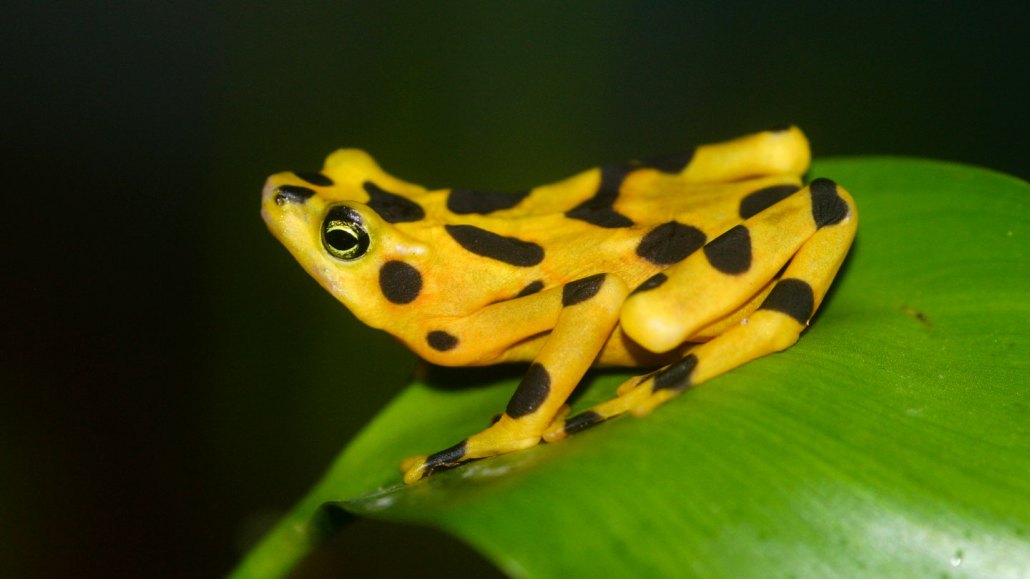amphibians: A group of animals that includes frogs, salamanders and caecilians. Amphibians have backbones and can breathe through their skin. Unlike reptiles, birds and mammals, unborn or unhatched amphibians do not develop in a special protective sac called an amniotic sac.
biodiversity: (short for biological diversity) The number and variety of species found within a localized geographic region.
chytridiomycosis: A disease caused by fungi (Batrachochytrium dendrobatidis and B. salamandrivorans). This disease is a major killer of amphibians, especially frogs, and appears to be responsible for the extinction of many amphibian species in recent years.
colleague: Someone who works with another; a co-worker or team member.
commercial: An adjective for something that is ready for sale or already being sold. Commercial goods are those caught or produced for others, and not solely for personal consumption.
Costa Rica: A Central American nation with coastlines along both the Pacific Ocean and Caribbean Sea. This country of nearly 5 million people is sandwiched between Nicaragua to the north and Panama to its south. Almost one-fourth of its land consists of protected rainforests, which are home to such animals as spider monkeys and the quetzal birds.
data: Facts and/or statistics collected together for analysis but not necessarily organized in a way that gives them meaning. For digital information (the type stored by computers), those data typically are numbers stored in a binary code, portrayed as strings of zeros and ones.
ecological: An adjective that refers to a branch of biology that deals with the relations of organisms to one another and to their physical surroundings. A scientist who works in this field is called an ecologist.
ecologist: A scientist who works in a branch of biology that deals with the relations of organisms to one another and to their physical surroundings.
economist: Someone who works in the field of economics: how a society's resources relate to the things it produces or achieves. Often this is measured in the goods people make, the money they earn or the costs they encounter (such as pollution or sickness). Economists might calculate this for something as small as a village or as large as a nation — even for workers living across the globe.
ecosystem: A group of interacting living organisms — including microorganisms, plants and animals — and their physical environment within a particular climate. Examples include tropical reefs, rainforests, alpine meadows and polar tundra. The term can also be applied to elements that make up some an artificial environment, such as a company, classroom or the internet.
extinction: (adj. extinct) The permanent loss of a species, family or larger group of organisms.
fungus: (plural: fungi) One of a group of single- or multiple-celled organisms that reproduce via spores and feed on living or decaying organic matter. Examples include mold, yeasts and mushrooms.
infection: A disease that can spread from one organism to another. It’s usually caused by some type of microbe.
insect: A type of arthropod that as an adult will have six segmented legs and three body parts: a head, thorax and abdomen. There are hundreds of thousands of insects, which include bees, beetles, flies and moths.
larvae: Immature insects that have a distinctly different form (body shape) than when they are adults. For instance, caterpillars are larval butterflies and maggots are larval flies. (Sometimes this term also is used to describe such a stage in the development of fish, frogs and other animals.)
link: A connection between two people or things.
malaria: A disease caused by a parasite that invades the red blood cells. The parasite is transmitted by mosquitoes, largely in tropical and subtropical regions.
satellite: A moon orbiting a planet or a vehicle or other manufactured object that orbits some celestial body in space.
species: A group of similar organisms capable of producing offspring that can survive and reproduce.
survey: To view, examine, measure or evaluate something, often land or broad aspects of a landscape. (with people) To ask questions that glean data on the opinions, practices (such as dining or sleeping habits), knowledge or skills of a broad range of people. Researchers select the number and types of people questioned in hopes that the answers these individuals give will be representative of others who are their age, belong to the same ethnic group or live in the same region. (n.) The list of questions that will be offered to glean those data.
wave: A disturbance or variation that travels through space and matter in a regular, oscillating fashion.








